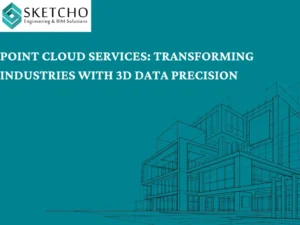Do you belong to the group of people who wonder how sometimes construction projects flow as smoothly as possible and others find snag after snag? Often, the secret is in the tools and technologies applied.
One revolutionary tool that has been blowing wind across the industry is BIM MEP. But what exactly is BIM MEP, and how can it transform your workflow? In the following paragraphs, we will explore this powerful solution.
What is BIM MEP?
BIM is Building Information Modeling, and MEP stands for Mechanical, Electrical, and Plumbing. Combining these two, you get BIM MEP: the digital representation of the physical and functional characteristics of a facility.
Unlike traditional 2D drawings, BIM MEP models go a notch higher in the view of a project, as they allow more comprehensive details in planning, design, construction, and management.
The Evolution from 2D to 5D Models
Gone are the days when construction projects used to rely on 2D drawings. Today’s industry, with the advent of BIM MEP, has shifted to 3D models that offer a much more immersive experience. But again, it goes further with the introduction of 4D and even 5D models.
- 3D Models add depth and spatial relationships.
- 4D Models integrate time, allowing for more accurate project scheduling.
- 5D Models have cost information included, making budget handling a lot easier.
That’s something that has revolutionized the way we do building projects now easier and error-free.
Benefits of Using BIM for MEP projects
You may ask, “Is BIM for MEP projects worth it?” And the simple answer is yes! Here are the compelling reasons why:
1. Improved Collaboration
Probably one of the biggest advantages is that BIM MEP fosters much better collaboration among all stakeholders, from architects to engineers to contractors, since everyone has access to the same model that is digital and online. This minimizes misunderstandings and really keeps everyone on the same page.
2. Increased Accuracy
According to the survey, it is found in reports that projects with the use of BIM tend to experience a reduction in errors. Thus, the more details and accuracy in the BIM MEP model, the smaller the mistakes happen, and this means fewer reworks and fewer costs.
3. Saving Time
Time is money, and that is even more vital in the case of construction. BIM MEP facilitates better scheduling and project management that reduces the time required for completion by a significant amount. In a study, projects working with BIM were completed faster than projects not using it.
4. Cost Efficiency
When these reduced errors, better resource management, and quicker project timelines are factored in, one can see how much in cost savings BIM MEP offers. Indeed, some estimates put the cost of construction reduced when using BIM MEP models.
5. Better Facility Management
It is not only useful during the actual construction phase but may also yield long-term benefits when it comes to facility management. The detailed models can be used for maintenance and renovations, and even future expansions, at any time during its life cycle, making it a great asset.
Challenges and How to Overcome Them
Of course, there are no completely problem-free systems either. Some of the common hurdles one commonly faces include initial implementation costs and learning curves associated with any kind of new technology. However, these challenges can be mitigated with proper planning and training.
For instance, investment in training for your staff will pay off in the longer term through making sure that everyone feels comfortable using BIM MEP tools. There are different tiers of BIM MEP software, too, so you can start off with a more basic version and then work your way up as you become more confident with the technology.
Case Studies: Real-World Applications
Now, to see how BIM MEP works, let’s examine a couple of real-world examples:
Hospital Construction
This is a new hospital where it utilized the detailed systems required in this kind of critical facility. This project resulted in a reduction in project time and a highly reduced clash occurrence of various systems due to the use of detailed modeling and real-time collaboration.
Office Building Renovation
In a recent renovation of the office building, the BIM MEP method was used to map out the existing systems and plan the new installation. The result was it saved costs, with a smoother construction process and less disruption to the existing occupants.
Conclusion
In this industry, where time, accuracy, and cost remain critical, BIM MEP stands out as no less than a real game-changer. For better help, contact Sketcho.





